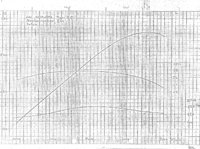Do you recommend floors or rockers first? I plan to do the floors before I strip the car. There are three other e9’s in WA that I could use as a potentially better start, but I would need floors to sell mine.
Markos,
If your floors are really bad, your sill (rocker) is usually bad as well, and the other way around. So it normally makes sense to do both. (i'm not taking about (dry) cars with floors that just have small holes that can be patched)
Doing the floors first works better; after you finish the floors, you open up the sill , asses it's state, replace or fix, and then weld the new floor to the fixed sill, treating the welds on both sides: grinding, clean and paint 'em.
Doing the sill first, keeping the old floor in, and closing the sill up completely before your weld in the floor gives you the problem that once you do the floor, that you'll end up with untreated welds inside your fresh sill. Wax won't prevent rust, it'll just delay it.
So in my view, the floor is replaced first, and the weld to the inner sill is made
after the inner sill is opened up and replaced or fixed-up.
The question that defines the amount of work is however not what order to choose but: Do I replace the inner sill, or fix it up? .
If i'd (ever again..) tackle another E9, I'd first check the condition of the inner sill and decide to renew or freshen-up. Once it is solid again, i'd build up the other sill layers only after the floor is in, welded to the inner sill, cleaned the welds up inside, and then continue with the intermediate sills, the A/B/C pillars, the outer layer and lastly the skins.
- If a little rust, you can leave the inner sill in place, perhaps replacing only some rusty sections (usually front, back and/or some bottom edge). Just drill some location holes for Cleco's /screws prior to dissecting the spot welds, clean up/patch the rough edges of the parts, and tack it all back together in the right place. Doing so, you have the advantage that you can keep alignment of subsequent layers perfect as the location of the A, B and C pillar reinforcements and the under-seat reinforcements will not change. You don't want to weld them in 2 mm off in X/Y/Z.
Second advantage is that with the sill reduced to only the inner layer + the floor out, you can access both sides of that sill to clean it up or replace. Then weld in the floor; still having the ability to clean the welds and coat both sides of the welds. Once finished, there will be no rust left in the seam where the panels meet. It is what I choose on my car.
- If your inner rocker is gone beyond saving, as in the case of James above, then no solid alternative exists other then to replace the complete inner rocker. Keeping the old floor in for a while helps to locate the new inner rocker using the position of the old floor. I'd stiffen up the old floor with an additional temporary welded bar prior to removing the last sill layer to keep the floor's shape (front to rear); prevent it from sagging. Once the new inner sill is in, you can mark the height of the old floor to the fresh sill, and then proceed to cut& replace the floor sections and tack / spot weld them to the inner sill. Once finished, there will be no rust left in the seam where the panels meet. Disadvantage is that you have lost the reference for your A/B/C pillar locations, so you must engineer other ways to relocate them.
regards, Erik.




